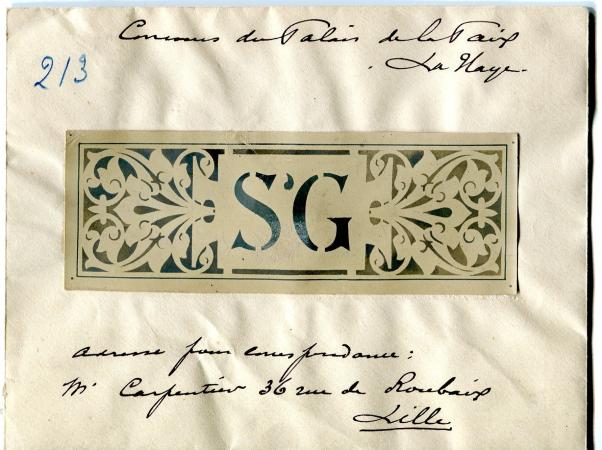The design of the Peace Palace by the French architect Louis M. Cordonnier (1854-1940) was the prize-winning design of the international architectural competition. His drawings enclosed a motto “S’G”, an abbreviation of which the meaning was unknown for many years.
The external appearance of the building expresses dignity and stateliness, in line with its function as a palace for peace and its seat of international law. The architect L.M. Cordonnier gave the structure a dynamic silhouette, while the total surface of the wall was colorful by the use of brick and natural stone. The original design contained furthermore a diversity of details and sculptural decorations. The draft was, after adjustments and simplification by the Dutch executive architect J.A.G van der Steur, hidden in the archives of the Carnegie Foundation, along with the motto. Therefore the meaning of “S’G” was a well-kept secret for a long time and was unraveled just a few days before the official celebration of the centennial anniversary of the Peace Palace. The discovery of an envelope that originally accompanied the design proposal, which L.M. Cordonnier at the time submitted to the jury, provided the answer. The envelope contained not only additional information related to the design concept, but also an explanation that the abbreviation “S’G” stands for “Silhouette Générale”.
The creation of a “Silhouette Générale” as a device clearly emphasized the objective of the design. The French architect shaped a silhouette consisting of four towers rising up at each side of the building, which seemed to be melting into the sky and at the same time referred to an elaboration within the genre of the picturesque, in accordance with the grey weather and architecture in the Netherlands. However, the Peace Palace, as we all know, has two towers instead of four. And thus, a question remains: Was the most important aspect in the design by L.M. Cordonnier of this local and global icon of peace and justice, to create a “Silhouette Générale”, diminished by the removal of three large towers?
